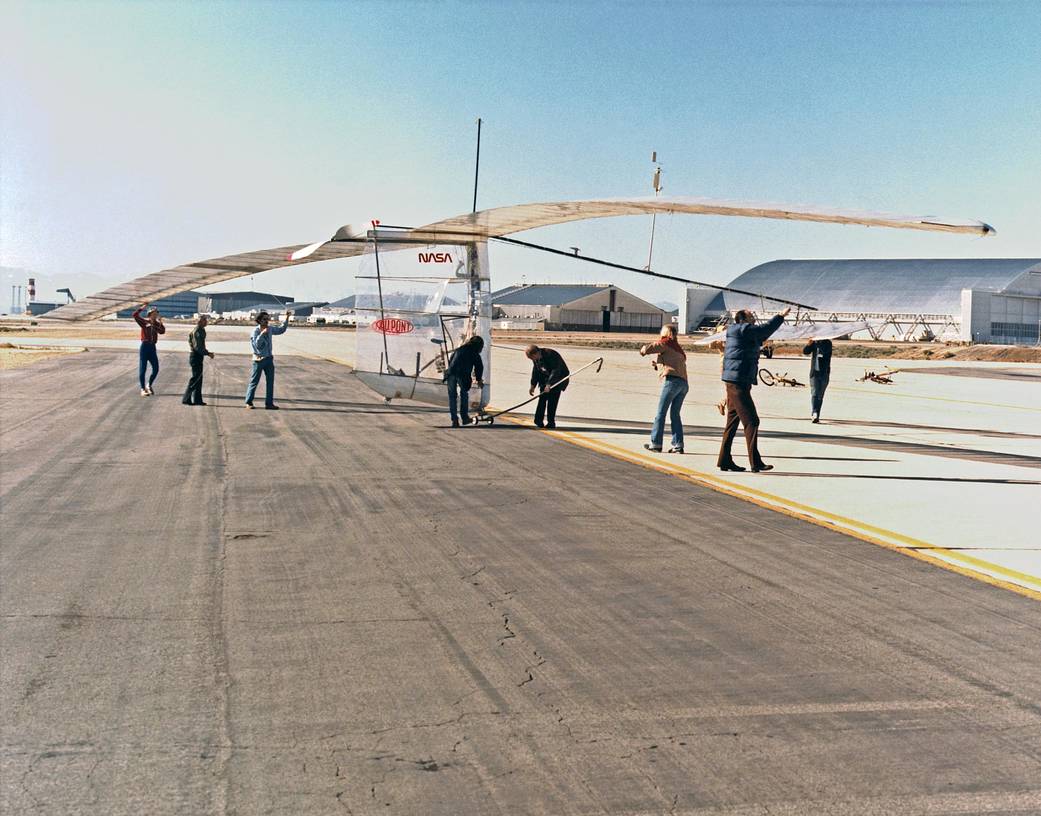ECN-12557
The Gossamer Albatross II was involved in slow-speed flight tests at the Dryden Flight Research Center, Edwards, Calif. in the spring of 1980.
The original Gossamer Albatross is best known for completing the first completely human-powered flight across the English Channel on June 12, 1979. Dr. Paul MacCready was later awarded the most prestigious prize in American aviation, the Collier Trophy, for his work in the record breaking project.
The Albatross II was the backup craft for the Channel flight. It was fitted with a small battery-powered electric motor and flight instruments for the NASA research project in low-speed flight. The minimal power required to fly this 94-foot-span aircraft suggested it could be solar-powered, and led to numerous later record breaking projects involving solar energy. NASA completed its flight testing of the Gossamer Albatross II and began analysis of the results in April, 1980.
During the six-week program, 17 actual data gathering flights and 10 other flights were flown here as part of the joint NASA Langley/Dryden flight research project.
The lightweight craft, carrying a miniaturized instrumentation system, was flown in three configurations; using human power, with a small electric motor, and towed with the propeller removed.
Results from the project contributed to data on the unusual aerodynamic, performance, stability, and control characteristics of large, lightweight aircraft that fly at slow speeds for application to future high-altitude aircraft.
The Albatross’ design and research data contributed to numerous later high-altitude projects, including the Pathfinder.
March 20, 1979NASA Photo / Jim Moran› Gossamer Albatross Project Description



























